John Begley: My DIY Retirement was on view at the University of Louisville’s Cressman Center for the Visual Arts from March 12 to April 30, 2021. The one-person show travels to the Janice Mason Art Museum in Cadiz, Kentucky, where it will be on display from June 8th to August 14th. Since 2014, John Begley has made daily cellphone drawings, now totaling more than 2500 works. (A complete portfolio can be seen at https://www.Blipfoto.com/jpbegley.) While it chronicled Begley’s online artmaking for the past seven years, in many ways the show read more as a manifesto of artistic democracy than a retrospective exhibition. The show broached several themes in contemporary art-making, including the influence of the DIY (Do It Yourself) aesthetic, the broad accessibility of everyday apps for sophisticated craft projects and artmaking, the interplay of high tech and intuitive processes, an insistence on physicality, and the artist as a postmodern, style- shuffling middleman/mediator. Art, art history, commerce, and materiality intersected at the Cressman. Humble recycled materials were prominent, re-enforcing the paradigm of artmaking within easy reach. Despite the serious questions the show raised, it was light-hearted and often humorous, and incorporated a surprising boutique for custom-designed clothing, bedding, and accessories.
The artist noted about his art, “these drawings have been done on my iPhone and present a visual journal. They are visual responses to daily activities, stimulations, and interests.” Most departed from observation, but few escaped further improvisation. The artist primarily uses the readily available app Brushes XP, following the lead of David Hockney. (Begley saw a show of Hockney iPhone drawings in Yorkshire, England in 2013.) Begley elaborated: “In My DIY Retirement, I have made the daily digital drawings I complete into vector graphics for printing in traditional analog printmaking techniques, and into digital print forms sometimes known as giclée prints, onto canvas, metal, acrylic, ceramic, stone or glass. I have also been printing on handmade papers.” Although occasionally using a stylus, Begley likes the feel of drawing with his finger. Doing so provides an opening to the promptings of chance, since the width of his fingers and the small size of the 4” x 4” screen means that he cannot immediately see the results of his mark-making.
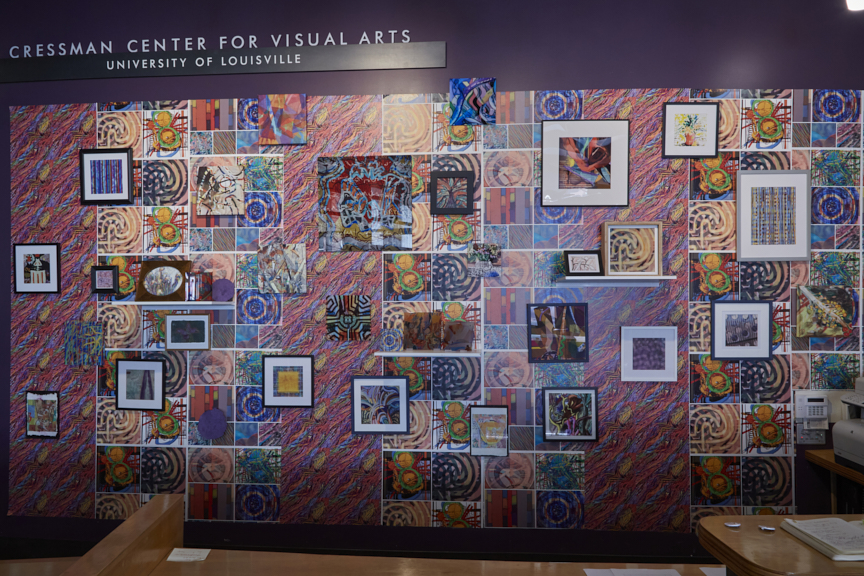
In a wall text and artist’s statement, Begley referred to the art historian Caroline A. Jones, who chronicled a shift in the 1960s from the existentialist musings within the abstract expressionist’s studio to the “internalization and incorporation of the discourse of technology into artistic production.” In the work of Andy Warhol, Frank Stella, Robert Smithson, and other artists of the 1960s, Jones detected “the performative technological sublime,” a linkage of technological representation and quasi-industrial methods. Begley’s take on this heritage was evident in the introductory wall outside of the gallery at the Cressman. The presentation surveyed a profusion of digital print applications. It featured 29 of his works of art, framed graphics, glass, and other printed surfaces, all seen against his three different digitally-printed wallpapers. A very clear demonstration of the naturalization of technology, the wall showed new media harnessed for a wide variety of expressive purposes. The dominant theme was emancipated circuitry: computer chip or motherboard patterns liberated from their functions to freely meander, loop, encircle, and act out labyrinthine paths.
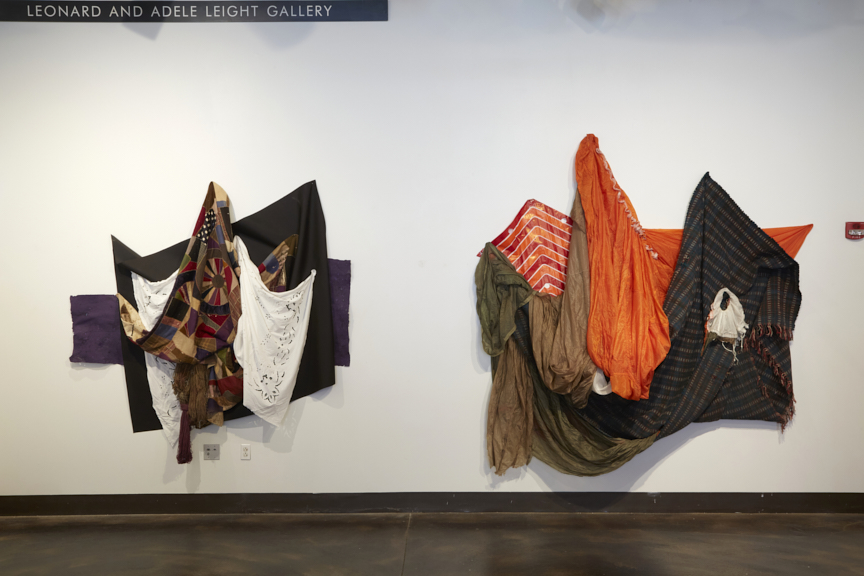
In contrast to the sophistication and technical finesse of the introductory wall, inside the gallery, two signal installations occupied the center of the most prominent wall in My DIY Retirement. The first was made up of a worn quilt, a tablecloth, a sheet of dyed purple handmade paper, a black cloth, and hanks of yarn. The second consisted of two parachutes, an old rug, and a kite. The installations had color, shape, mass, and a variety of tactile surfaces: these scavenged materials provided multi-textured sensory stores of experience. The installations registered an insistence on materiality as a core component of Begley’s sensibility and extended the message of democratic artmaking. A gallery is a contextual zone of expectations, and here associations with tapestries or wall hangings logically followed, providing validating art historical resonance to the assemblages. The principal validator appeared to be the free hung canvases of Sam Gilliam. (The artist cites Salmon Rushdie’s remark, “in the absence of genius, imitation is an acceptable alternative.”) Begley’s two constructions served as a democratic model for Everyman to make art.
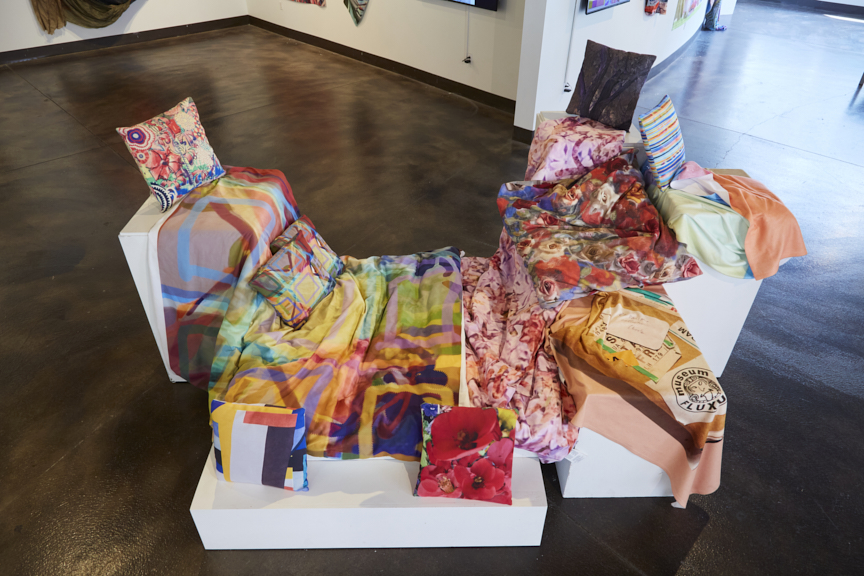
Extending the contemporaneity of the outside introductory wall were a variety of artworks in the main gallery demonstrating digital printmaking as an inexpensive alternative to traditional processes. The luxuriant overall tenor of the gallery was set by the prints to be worn, sat upon, or slept under. Scarves, pillows, jackets, and leggings joined the pictorial applications on flat and curved glass, plastic, aluminum, and wallpaper. For the uninitiated, it was an eye-opening demonstration of the range of applications that could be executed with homemade digital designs – now so commonplace that Walmart is a purveyor. The textural richness of draped and knotted cloth and a heightened sensitivity to touch were leitmotivs linking the range of both coarse and fine stuff in the show.
Printmaking’s democratic heritage is important to Begley, especially its origin as a means of extending access to images that would otherwise be unaffordable to a wide audience. While he has worked as an arts administrator, gallery director, and professor, his core discipline is printmaking, which he studied as an undergraduate at the University of New Mexico and as a graduate student at the University of New Mexico. As an assistant printer, he worked at Landfall Press on editions by William T. Wiley, Chuck Close, Jack Tworkov, Claes Oldenburg, John Baeder, and Peter Saul. As director of the New Harmony, Indiana Gallery of Contemporary Art, he ran a print studio and taught printmaking through an affiliation with the University of Evansville. It was a period of intense interaction with other Indiana arts and crafts programs, including weaving and ceramics workshops. For 19 years he was director of what is now Louisville Visual Art. Thereafter for 13 years he taught at the University of Louisville and launched its Critical and Curatorial Studies Master’s Degree program. When Sam Gilliam was a visiting professor at UofL in 1997, Begley was a member of the team working with him on several prints.
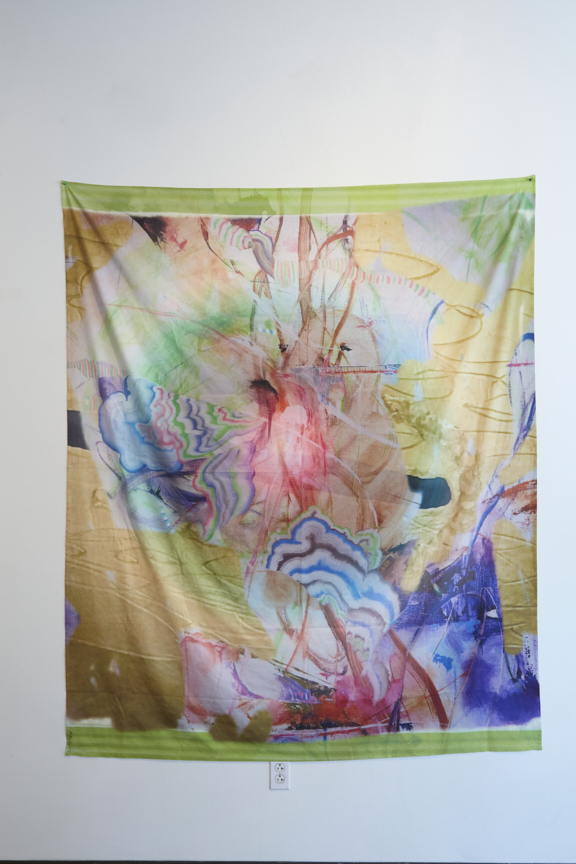
Proposed Solipsism was a wall hanging approximating the size of Mark Rothko’s standard vertical format, but followed from very different premises. It was a five-layer digital print made with Brushes XP. Ripples and folds fell freely. Densities of the imagery varied greatly, although all were translucent. Geological and vegetal references shifted across the cloth. Spontaneous linear digressions and wispy cirrus clouds of red, green, yellow, purple, and violet played against more studied passages resembling slices of geodes. Indeterminate, open-ended, resistant to allegorical readings, the hanging posited that a phenomenology of color, line, and texture is appropriate for abstraction originating in the range of effects in digitally based printmaking.
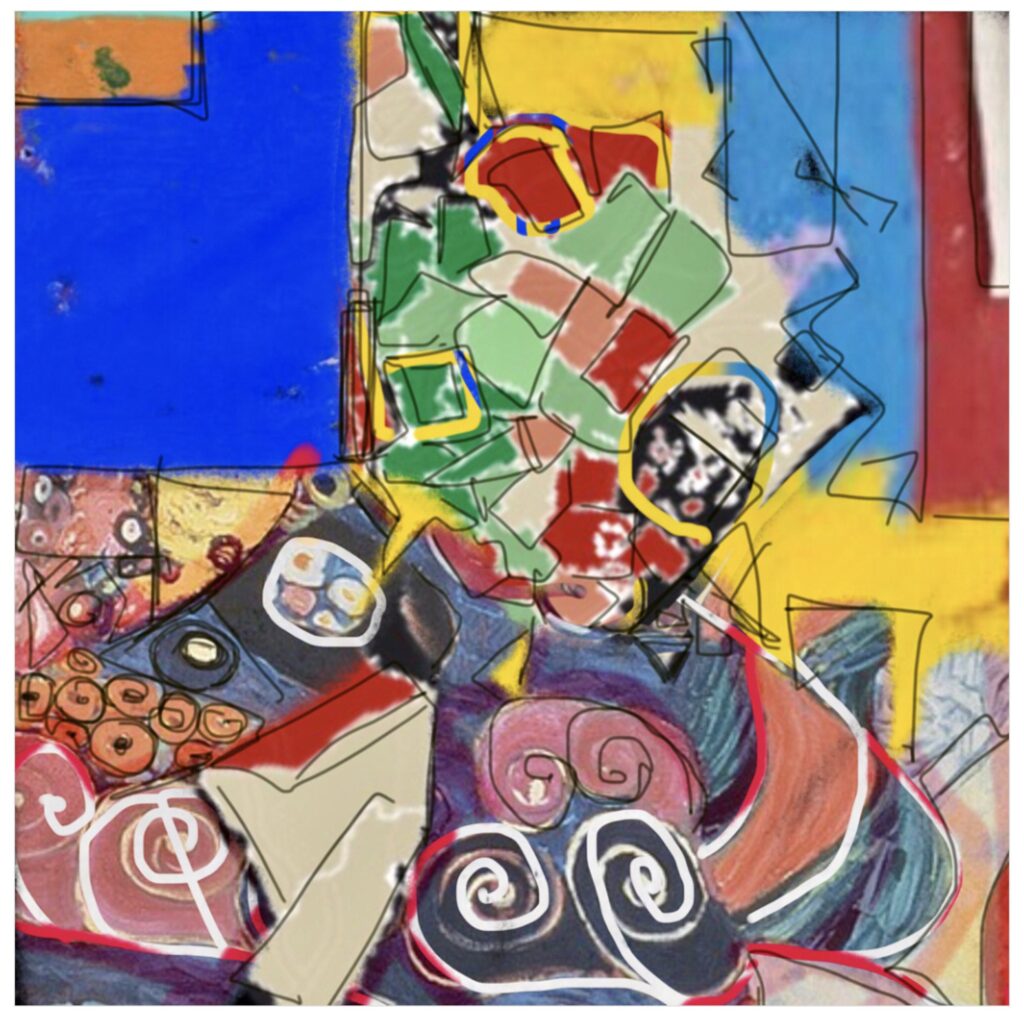
Begley constantly plays with the surface of his smaller prints. New World Metamorphosis was printed on paraffin-waxed handmade paper and has the set-into-the-surface quality of a monoprint or stained glass (think of John Lafarge). In contrast, For MFedderizzi, an inkjet print on archival paper, took advantage of the crisp clarity of digital generation. As a traditional lithograph or silkscreen, this print might require dozens of pulls through a press. Economy of production is another of Begley’s democratic biases. Lost Idol, also on handmade paper, was reminiscent of the surrealism and interest in the automatism of the printmaker Stanley William Hayter. In Abstraction, Figuration and Appropriation, an inkjet print on archival paper, an abstracted still life varied from hard to soft-edged shapes. It is a pastiche of several artists’ autograph moves: I saw references to Matisse, Hofmann, and Hockney for starters. The structural components of image-making are dissected and joyously re-ordered and endowed with a humorous pitch. Begley possesses a variety of artistic identities through his daily practice, evading the shackles of a signature style. His diversity of manners and eclecticism echo Duchampian and Fluxus evasions.
In all of these experiments, one sees Begley’s joy in mark-making and in parallel, pleasure in manipulating cloth. Begley’s abstract line is continuously varied in its gait or motion of progress, at one moment sharp and angular and at another moment gliding with ease. (This was especially evident in abstract videos in the show.) The iPhone line allows precise clarity and crispness or alternatively, melted edges and gradations of color and tone. The billowing folds, knots, and droops in his printed cloths function as low relief sculpture. “The mutability of the digital artifact,” Begley’s recurring theme, reverberated especially in the cloth pieces, and reinforced the notion that art could no longer be static and fixed.
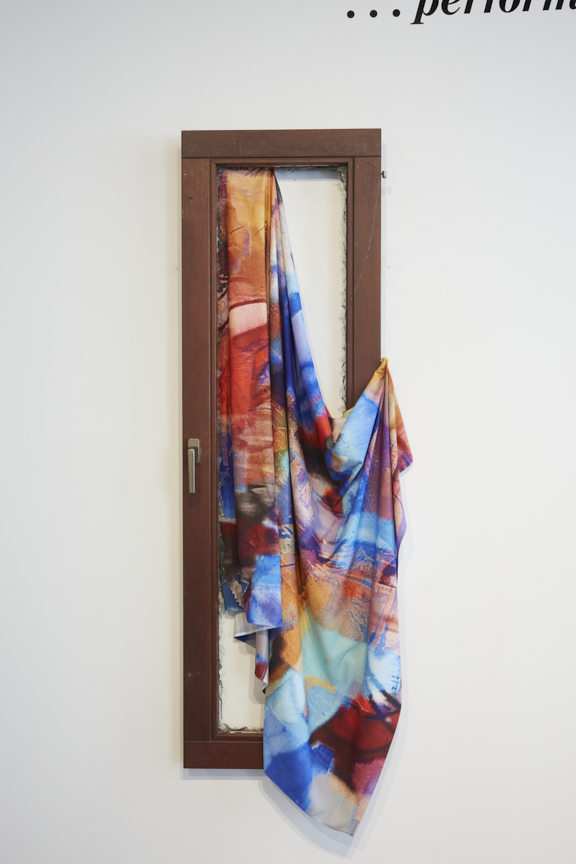
Several works in the exhibition juxtaposed Begley’s printed cloths with colored papers or framed prints. Some of these used recycled picture frames or doors, which were juxtaposed with fabrics printed with Begley’s abstractions. The cloths swirled around or wrapped the frames: it seemed as if traditional pictorial imagery had escaped the imaginary world within the frame, but remained to honor in retrospect the illusions that once occupied the dimensions within. One of the wrapped frames was formerly a cabinet door and the jagged broken glass on its edges may serve as a reminder of the protests in honor of Breonna Taylor, as well as a material danger to the printed cloth – by extension, to the creative process.
John Begley: My DIY Retirement blurred the traditional line between fine and applied arts by appropriating craft techniques and materials. Delegating fabrication to a computer app positions the artist, not as a peripheral loner isolated in his or her studio, but as a participant in global discourse and in a constantly evolving network of information and technology. In this exhibition, consumer goods were a means for an emancipatory message about the democratization of creative activity and the new ability of the computer-enabled artist to reach far beyond the constraints of more traditional practices. Begley’s affirmative self-presentation as a digital artist interrogated older shibboleths about the nature of artistic identity. How does one make art in 2021? The only answer is: as a full participant in using every possibility of the present moment.




